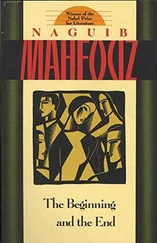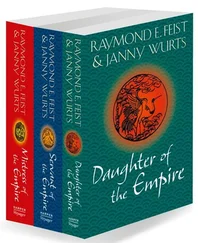Chalmers Johnson - The Sorrows of Empire - Militarism, Secrecy, and the End of the Republic
Здесь есть возможность читать онлайн «Chalmers Johnson - The Sorrows of Empire - Militarism, Secrecy, and the End of the Republic» весь текст электронной книги совершенно бесплатно (целиком полную версию без сокращений). В некоторых случаях можно слушать аудио, скачать через торрент в формате fb2 и присутствует краткое содержание. Год выпуска: 2003, ISBN: 2003, Издательство: Macmillan, Жанр: Старинная литература, на английском языке. Описание произведения, (предисловие) а так же отзывы посетителей доступны на портале библиотеки ЛибКат.
- Название:The Sorrows of Empire: Militarism, Secrecy, and the End of the Republic
- Автор:
- Издательство:Macmillan
- Жанр:
- Год:2003
- ISBN:9780805077971
- Рейтинг книги:4 / 5. Голосов: 1
-
Избранное:Добавить в избранное
- Отзывы:
-
Ваша оценка:
- 80
- 1
- 2
- 3
- 4
- 5
The Sorrows of Empire: Militarism, Secrecy, and the End of the Republic: краткое содержание, описание и аннотация
Предлагаем к чтению аннотацию, описание, краткое содержание или предисловие (зависит от того, что написал сам автор книги «The Sorrows of Empire: Militarism, Secrecy, and the End of the Republic»). Если вы не нашли необходимую информацию о книге — напишите в комментариях, мы постараемся отыскать её.
The Sorrows of Empire: Militarism, Secrecy, and the End of the Republic — читать онлайн бесплатно полную книгу (весь текст) целиком
Ниже представлен текст книги, разбитый по страницам. Система сохранения места последней прочитанной страницы, позволяет с удобством читать онлайн бесплатно книгу «The Sorrows of Empire: Militarism, Secrecy, and the End of the Republic», без необходимости каждый раз заново искать на чём Вы остановились. Поставьте закладку, и сможете в любой момент перейти на страницу, на которой закончили чтение.
Интервал:
Закладка:
After George W. Bush became president, ten of the eighteen signers of the letters to Clinton and Republican congressional leaders became members of the administration. They bided their time for nine months. In the words of the PNAC’s Rebuilding America’s Defenses, they were waiting for a “catastrophic and catalyzing event—like a new Pearl Harbor” that would mobilize the public and allow them to put their theories and plans into action. September 11 was, of course, precisely what they were looking for. Within days, Condoleezza Rice called together members of the National Security Council and asked them “to think about ‘how do you capitalize on these opportunities’ to fundamentally change American doctrine, and the shape of the world, in the wake of September 11th.” She said, “I really think this period is analogous to 1945 to 1947,” referring to the years when fear and paranoia led the United States into its cold war with the USSR. 15
Still, the Bush administration could not just go to war with Iraq without tying Saddam Hussein’s regime in some way to the 9/11 attacks. It therefore first launched an easy war against Afghanistan because there was a connection between Osama bin Laden and the Taliban regime, even though the United States had contributed more to Osama’s development as a terrorist than the extremist Afghan group ever did. The strategy of that war was to rely on massive American bombing and, using suitcases full of money, to recruit the forces of the Northern Alliance warlords, whom the Taliban had defeated, to do the actual fighting as our sepoys. Meanwhile, the White House launched one of the most extraordinary propaganda campaigns of modern times to convince the public that an attack on Saddam Hussein should be an essential part of America’s “war on terrorism.” This calculated attempt to whip up war fever, in turn, elicited an outpouring of speculation around the world on the true motives of the American president and his evident obsession with Iraq.
The first and most obvious ploy of the warhawks was to claim, in the words of President Bush, that “[Saddam] possesses the most deadly arms of our age.” The only problem with this argument was that it probably was not true. Iraq certainly had such weapons of mass destruction (WMDs) at one time, but between 1991 and 1998 a combination of the first Gulf War, U.N. sanctions, and the U.N. inspectors appears to have destroyed most or all of them as well as Iraq’s capability to produce more. As Scott Ritter put it, “I bear personal witness through seven years as a chief weapons inspector in Iraq for the United Nations to both the scope of Iraq’s weapons of mass destruction programs and the effectiveness of U.N. weapons inspectors in ultimately eliminating them.” 16Never one to give up on any ploy that might help his cause, Rumsfeld replied that “the absence of evidence is not evidence of absence.” This issue led to the return of U.N. weapons inspectors, but not, as it turned out, to international support for the White House’s war plans. PNAC was, in any case, never much interested in Saddam’s WMDs except as a convenient excuse. “While the unresolved conflict with Iraq provides the immediate justification,” wrote the authors of Rebuilding America’s Defenses, “the need for a substantial American force presence in the Gulf transcends the issue of the regime of Saddam Hussein.” 17Bush did not hedge his bets. As late as a March 6,2003, press conference in the East Room of the White House, he exclaimed, “Saddam Hussein is not disarming. This is a fact. It cannot be denied.”
The administration’s harping on the danger that Saddam might give unconventional weapons to “evildoers” rang a familiar bell for those who remember the propaganda that accompanied the prologue to the first Iraq war. Then, the mobilizing tale of the administration of Bush Senior was that Iraqi soldiers had pulled babies from Kuwait’s hospital incubators and, in Bush’s words, “scattered them across the floor like firewood.” The president repeatedly referred to “312 premature babies at Kuwait City’s maternity hospital who died after Iraqi soldiers stole their incubators and left the infants on the floor.” According to Dr. Mohammed Matar, director of Kuwait’s primary care system, and his wife, Dr. Fayeza Youssef, who ran the obstetrics unit at the maternity hospital, there were only a handful of incubators in all of Kuwait and few if any babies in them at the time of the Iraqi invasion. Bush made these comments a few days before the United Nations, on November 29, 1990, authorized the use of “all means necessary” to eject Iraq from Kuwait. After the war it was revealed that Kuwait had hired the big Washington public relations firm of Hill & Knowlton to peddle this story, and on October 10, 1990, arranged for an “eyewitness” to testify before Congress that it had indeed happened. That witness, who turned out to be the daughter of the Kuwaiti ambassador to Washington, had not been anywhere near a hospital in Kuwait City in August 1990. Other “witnesses” who claimed to have seen Iraqi atrocities later acknowledged that they had all been coached by Hill & Knowlton. 18
On October 7, 2002, President Bush fils contributed what was surely the weirdest of his homicidal-dictator-with-WMDs rationales for a war with Iraq. In a speech in Cincinnati, after noting that “Saddam Hussein is a homicidal dictator who is addicted to weapons of mass destruction,” he warned that “Iraq has a growing fleet of manned and unmanned aerial vehicles that could be used to disperse chemical and biological weapons across broad areas. We’re concerned that Iraq is exploring ways of using these [unmanned aerial vehicles] for missions targeting the United States.” Presumably Bush was here referring to the Czech L-29 jet training aircraft, 169 of which Iraq had bought in the 1960s and 1980s. The L-29 is a single-engine, dual-seat plane intended as a basic flight trainer for novices. It was the Soviet bloc’s version of America’s Cessna, with a range of about 840 miles and a top speed of around 145 miles per hour. There is some evidence that before the Gulf War Iraq had experimented with converting these aircraft into unmanned aerial vehicles—but they may have only been intending to use them as crop dusters. 19In any case, the president did not explain how these slow-moving aircraft could reach Maine, the nearest point on the U.S. mainland to Iraq, some 5,500 miles away, or why they would not be shot down the moment they crossed Iraq’s borders.
Another major claim in the Bush administration’s march to war was that Saddam had backed the al-Qaeda terrorist attacks of September 11. In August 2002, Rumsfeld told Tom Brokaw on NBC News that “there are al-Qaeda in Iraq.” On September 26, 2002, he said that the government had “bulletproof” confirmation of links between Iraq and al-Qaeda members, including “solid evidence” that members of the terrorist network maintained a presence in Iraq (but not in Pakistan, our soon-to-be ally). Rumsfeld went on to suggest that Iraq had offered safe haven to bin Laden and the Taliban leader Mullah Mohammed Omar. In an October 11, 2002, speech, President Bush said, “Some al-Qaeda leaders who fled Afghanistan went to Iraq.” Since the “solid evidence” was never released, one must assume that Rumsfeld and Bush were referring to about 150 members of a group called Ansar al Islam (“Supporters of Islam”) who took refuge in the Kurdish areas of northern Iraq. The problem is that America’s would-be Kurdish allies controlled this area, not Saddam. There was no evidence of actual links between Saddam and Osama bin Laden, a point often made by the CIA, and such cooperation would in any case have been implausible given Osama’s religious commitments and Saddam’s ruthlessly secular regime.
Читать дальшеИнтервал:
Закладка:
Похожие книги на «The Sorrows of Empire: Militarism, Secrecy, and the End of the Republic»
Представляем Вашему вниманию похожие книги на «The Sorrows of Empire: Militarism, Secrecy, and the End of the Republic» списком для выбора. Мы отобрали схожую по названию и смыслу литературу в надежде предоставить читателям больше вариантов отыскать новые, интересные, ещё непрочитанные произведения.
Обсуждение, отзывы о книге «The Sorrows of Empire: Militarism, Secrecy, and the End of the Republic» и просто собственные мнения читателей. Оставьте ваши комментарии, напишите, что Вы думаете о произведении, его смысле или главных героях. Укажите что конкретно понравилось, а что нет, и почему Вы так считаете.











